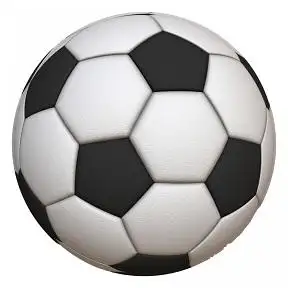
Soccer involves extensive foot work both while scoring a goal and defending one. Except the goalkeeper, no other player may use his hands or arms to touch the ball at any point during the game. Netting the ball into the opponent’s goal gives points that pile on to decide the winning team. The court is a rectangular outdoor field and the spherical football is kicked around its length and breadth by eleven players from each team to score goals. Soccer involves two halves lasting forty five minutes each during which goals must be scored. There is also a fifteen minute half-time break between the two halves.
Since the sport is played continuously for forty-five minutes, extreme fitness is required on part of all the players. The players map the 110-yard court back and forth, chasing the ball, tens of times in just one half. Stamina reigns supreme on field. Force is also required to kick the ball around, often all the way across the width of the court. Continuous legwork often leads to sprained ankles, pulled hamstrings and ruptured feet tendons. Pain in the knee and Achilles’ tendon at the back of the heel are common consequences of a soccer match, especially when played dirty. Thigh and calf muscle pulls are often noted in players due to an accidental overstretch or simple overuse. Knee cartilage tears and Anterior Cruciate Ligament (ACL) sprain are more severe variants of soccer injuries and might need surgery for repair.
Players defending goal often find themselves tripping over another players’ feet and bruising shins and knees. Concussions, fractures and dislocations amount for other commonly noted injuries on the football field. Immediate rest, ice fomentation, elevation, splinting and pain-killers are necessary first- aid measures. Overuse injuries need more rest and heal in due time. More often than not, the injuries are minor and get better with rest. Every once in a while however, a player might find himself facing situations akin to an Egyptian mummy with plaster casts and bandages all over!
With ample fitness, stretches, warm up and hydration you can be fighting fit for the soccer field.
Penned by Dr. Rachita Narsaria
References:
- http://orthoinfo.aaos.org/topic.cfm?topic=A00113
- http://orthoinfo.aaos.org/topic.cfm?topic=A00187
- http://www.mayoclinic.org/diseases-conditions/sprained-ankle/basics/definition/CON-20032428







